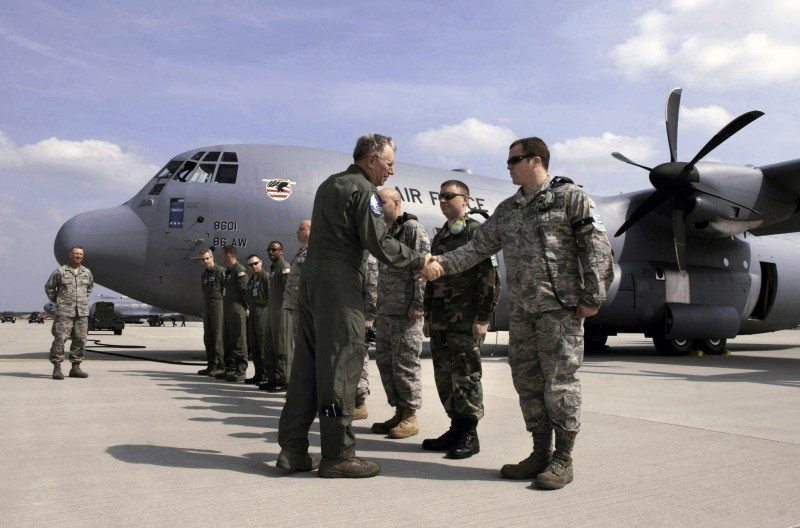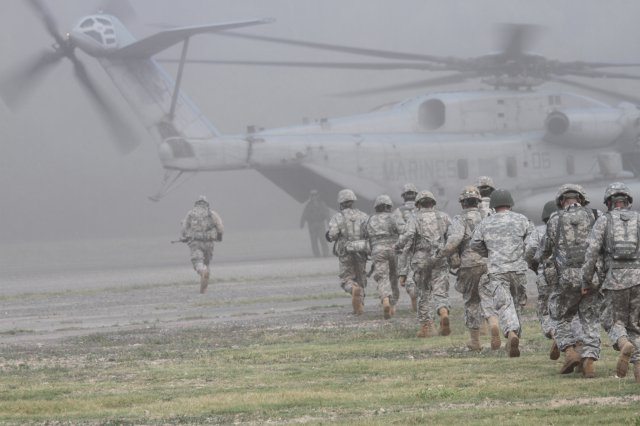While the U.S. continues to reduce its military presence in Europe, the Defense Department is conducting a review to identify more Europe-based installations and training areas to recommend for closure or realignment.
Then-Defense Secretary Leon E. Panetta directed the review in January, and results are expected by the year’s end, a senior defense official told Congress earlier this week.
The review was ordered in light of force reductions under way or planned in Europe, and also because Congress directed DOD to seek out ways to cut infrastructure in Europe before requesting any more base realignments and closures in the United States.
John Conger, acting deputy undersecretary of defense for installations and environment, described the European base review as a “BRAC-like process” that will help identify excess infrastructure and propose efficiencies in troop basing.
“We’re doing a thorough scrub,” Conger told the Senate Armed Service Committee’s readiness and management support subcommittee.
“We have been reducing our force structure in Europe for quite some time, and we have been reducing our facilities in Europe for that same amount of time,” Conger said. “There’s a lot that’s been done already.”
In fact, the U.S. force in Europe has decreased about 80 percent from the height of the Cold War, when the United States had 450,000 service members serving at some 1,200 bases, Navy Adm. James G. Stavridis, the U.S. European Command commander and supreme allied commander for Europe, told Congress last month.
Today, Eucom consists of 64,000 joint forces, representing less than 5 percent of the U.S. military, spread across 21 major bases and smaller supporting sites, Stavridis reported.
Panetta announced details of planned changes in the U.S. military presence in Europe last year. They included the inactivation of two of the four brigade combat teams in Europe by fiscal year 2014, the 603rd Air Control Squadron in Italy in fiscal 2013 and the 81st Fighter Squadron at Spangdahlem Air Base, Germany, during fiscal 2013.
The 170th Infantry Brigade inactivation in Baumholder, Germany, is now complete, and the 172nd Separate Infantry Brigade in Grafenwoehr, Germany, is preparing to follow suit. Its last M1 Abrams tanks were shipped back to the United States from the port in Bremerhaven, Germany, last month.
Meanwhile, as Conger testified before Congress on April 24, an A-10 Thunderbolt aircraft whirred over the Joint Multinational Training Command’s Grafenwoehr Training Area for the last time. The flight was the end of a 37-year legacy there as the 81st Fighter Squadron prepares to deactivate.
Based on reductions and planned reductions in the force presence in Europe, Conger told Congress DOD has plans to further reduce the number of bases needed to accommodate them.
The new review, he said, will help identify ways to consolidate operations where it makes sense with an eye toward increased efficiency as well as cost-savings.
“We are developing business case analyses for this task, taking operational impacts, return on investment, and military value into consideration,” Conger said. “By the end of this year, we plan to conclude with a fully vetted list of options from which the secretary can make strategic investment decisions.”
The process will help DOD realize long-term savings by eliminating excess infrastructure, recapitalizing where possible and closing or consolidating sites where feasible, he said.
“We are going to look for ways to leverage the various services together in order to maximize the amount of consolidation,” he told the Senate panel. “The results will ultimately validate our enduring European infrastructure requirements, providing an analytical basis to support sustainment funding and future recapitalization.”











